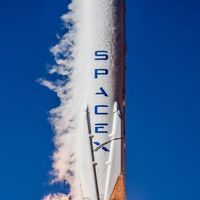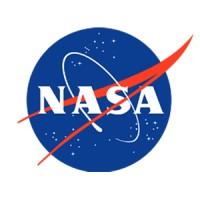The Mysterious Pulse: Boeing's Starliner and the Sounds of Space
September 3, 2024, 9:41 am

Location: United States, Illinois, Chicago
Employees: 10001+
Founded date: 1916
Total raised: $25.01B

Location: United States, District of Columbia, Washington
Employees: 5001-10000
Founded date: 2002
Total raised: $7.53B

Location: United States, Maryland, Greenbelt
Employees: 10001+
Founded date: 1958
Total raised: $25.7B
In the vast silence of space, a strange sound emerged from the Boeing Starliner docked at the International Space Station (ISS). On August 31, 2024, the spacecraft began emitting a peculiar "pulsing" noise. This sound, reminiscent of sonar, caught the attention of astronaut Butch Wilmore, who was aboard the Starliner. He reached out to NASA for assistance, igniting a wave of curiosity and concern.
The noise was not just a random occurrence. It was a call for help from the cosmos. Wilmore described the sound as a series of rhythmic pings, almost like an echo bouncing off the walls of the spacecraft. He likened it to a sonar signal, a beacon in the void. This auditory anomaly prompted immediate investigation from NASA's team in Houston.
Wilmore's request was straightforward. He needed to transmit the sound to the engineers on the ground. With a microphone in hand, he captured the eerie noise, sending it through the ether to the experts. The response was swift. NASA's team analyzed the audio, trying to decipher the mystery that had unfolded in the confines of the Starliner.
As the investigation progressed, it became clear that the sound was not a harbinger of doom. Instead, it was a case of acoustic feedback. NASA's Cheryl Warner explained that the ISS's complex audio system can sometimes produce unexpected sounds. The Starliner's speaker had become a conduit for this feedback, creating the pulsing noise that had alarmed the crew.
Despite the initial concern, the sound posed no threat to the spacecraft or its occupants. It was a mere glitch in the system, a hiccup in the otherwise smooth operation of the ISS. The engineers reassured Wilmore and his crew that the feedback was harmless. The sound had ceased, leaving behind a sense of relief.
Yet, the incident raised questions about the intricacies of space travel. The ISS is a bustling hub of activity, with multiple spacecraft and modules communicating simultaneously. This complexity can lead to acoustic anomalies, where sounds travel in unexpected ways. The Starliner's experience was a reminder of the challenges faced in the silence of space.
Wilmore's encounter with the mysterious noise sparked a flurry of online discussion. Social media users speculated about the source of the sound, with some drawing comparisons to feedback loops. The incident became a topic of interest, not just for space enthusiasts but for anyone intrigued by the unknown.
The situation also highlighted the importance of communication in space. Astronauts rely on clear lines of dialogue with mission control. In this case, Wilmore's quick thinking and proactive approach allowed for a swift resolution. His ability to convey the issue ensured that the engineers could act promptly, showcasing the teamwork that is essential in space missions.
As the dust settled, the focus shifted back to the Starliner's mission. NASA had previously announced plans to return Wilmore and fellow astronaut Sunita Williams to Earth aboard a SpaceX Crew Dragon in February 2025. The decision to bypass the Starliner for their return was rooted in safety concerns. NASA prioritized the well-being of its astronauts, opting for a more reliable option.
The Starliner, which had been stuck at the ISS, was scheduled to depart on September 6, 2024, weather permitting. This departure marked a significant moment for Boeing, as the company continued to navigate the complexities of its spacecraft development. The incident served as a reminder of the hurdles faced in the pursuit of space exploration.
In the grand scheme of things, the pulsing sound from the Starliner was a minor blip in the vast expanse of space. Yet, it underscored the delicate balance of technology and human ingenuity. Every sound, every signal, is a piece of the puzzle that makes up our understanding of the universe.
As we look to the stars, we are reminded that even in the silence of space, there are stories waiting to be told. The Starliner's experience is just one chapter in the ongoing saga of human exploration. It serves as a testament to our resilience and adaptability in the face of the unknown.
In the end, the pulsing sound was a fleeting moment, a reminder of the complexities of space travel. It was a sound that echoed through the corridors of the ISS, a brief interruption in the silence of the cosmos. But it also highlighted the spirit of collaboration and problem-solving that defines our journey into the stars. As we continue to explore, we must remain vigilant, ready to listen for the sounds that guide us through the darkness.
The noise was not just a random occurrence. It was a call for help from the cosmos. Wilmore described the sound as a series of rhythmic pings, almost like an echo bouncing off the walls of the spacecraft. He likened it to a sonar signal, a beacon in the void. This auditory anomaly prompted immediate investigation from NASA's team in Houston.
Wilmore's request was straightforward. He needed to transmit the sound to the engineers on the ground. With a microphone in hand, he captured the eerie noise, sending it through the ether to the experts. The response was swift. NASA's team analyzed the audio, trying to decipher the mystery that had unfolded in the confines of the Starliner.
As the investigation progressed, it became clear that the sound was not a harbinger of doom. Instead, it was a case of acoustic feedback. NASA's Cheryl Warner explained that the ISS's complex audio system can sometimes produce unexpected sounds. The Starliner's speaker had become a conduit for this feedback, creating the pulsing noise that had alarmed the crew.
Despite the initial concern, the sound posed no threat to the spacecraft or its occupants. It was a mere glitch in the system, a hiccup in the otherwise smooth operation of the ISS. The engineers reassured Wilmore and his crew that the feedback was harmless. The sound had ceased, leaving behind a sense of relief.
Yet, the incident raised questions about the intricacies of space travel. The ISS is a bustling hub of activity, with multiple spacecraft and modules communicating simultaneously. This complexity can lead to acoustic anomalies, where sounds travel in unexpected ways. The Starliner's experience was a reminder of the challenges faced in the silence of space.
Wilmore's encounter with the mysterious noise sparked a flurry of online discussion. Social media users speculated about the source of the sound, with some drawing comparisons to feedback loops. The incident became a topic of interest, not just for space enthusiasts but for anyone intrigued by the unknown.
The situation also highlighted the importance of communication in space. Astronauts rely on clear lines of dialogue with mission control. In this case, Wilmore's quick thinking and proactive approach allowed for a swift resolution. His ability to convey the issue ensured that the engineers could act promptly, showcasing the teamwork that is essential in space missions.
As the dust settled, the focus shifted back to the Starliner's mission. NASA had previously announced plans to return Wilmore and fellow astronaut Sunita Williams to Earth aboard a SpaceX Crew Dragon in February 2025. The decision to bypass the Starliner for their return was rooted in safety concerns. NASA prioritized the well-being of its astronauts, opting for a more reliable option.
The Starliner, which had been stuck at the ISS, was scheduled to depart on September 6, 2024, weather permitting. This departure marked a significant moment for Boeing, as the company continued to navigate the complexities of its spacecraft development. The incident served as a reminder of the hurdles faced in the pursuit of space exploration.
In the grand scheme of things, the pulsing sound from the Starliner was a minor blip in the vast expanse of space. Yet, it underscored the delicate balance of technology and human ingenuity. Every sound, every signal, is a piece of the puzzle that makes up our understanding of the universe.
As we look to the stars, we are reminded that even in the silence of space, there are stories waiting to be told. The Starliner's experience is just one chapter in the ongoing saga of human exploration. It serves as a testament to our resilience and adaptability in the face of the unknown.
In the end, the pulsing sound was a fleeting moment, a reminder of the complexities of space travel. It was a sound that echoed through the corridors of the ISS, a brief interruption in the silence of the cosmos. But it also highlighted the spirit of collaboration and problem-solving that defines our journey into the stars. As we continue to explore, we must remain vigilant, ready to listen for the sounds that guide us through the darkness.
